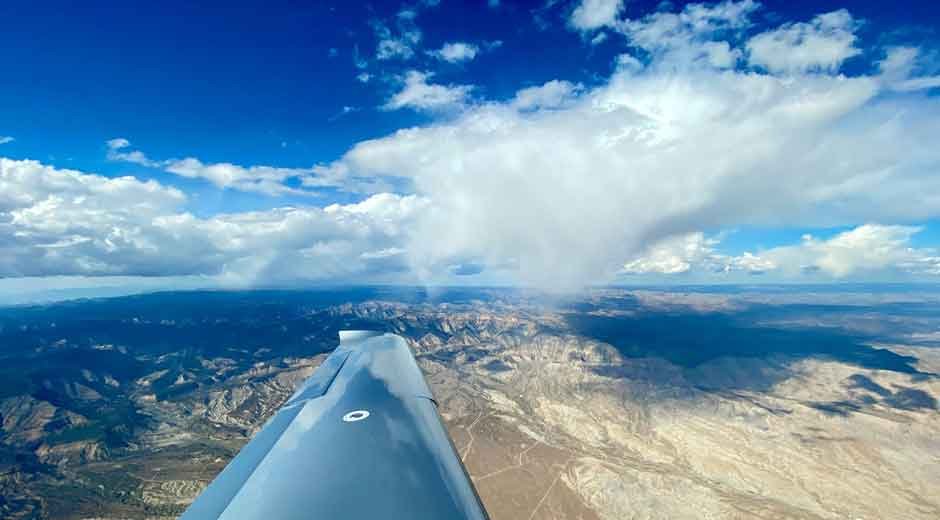Air travel is one of the safest modes of transportation, and that safety comes down to rigorous protocols and collaborative efforts among industry professionals and passengers. Every flight involves an intricate system of checks and balances designed to ensure that passengers travel securely, from the moment they book their tickets to the time they land at their destination.
This guide highlights key safety measures in air travel, including pre-flight preparations, passenger responsibilities, and the critical roles played by aviation professionals. By understanding these elements, travelers can appreciate the collaborative effort required to maintain secure flights.
Table of Contents
The Importance of Pre-Flight Checks
A safe flight begins long before the airplane takes off. Behind the scenes, thorough pre-flight inspections ensure that every aspect of the aircraft is in peak condition.
Comprehensive Systems Inspections
Before every flight, airlines follow strict procedures to inspect an aircraft’s systems. These inspections cover critical areas such as:
- Engines and Fuel Systems:Ensuring all parts are functioning at optimal performance.
- Flight Instruments and Controls:Verifying accuracy and responsiveness.
- Hydraulics and Landing Gear:Testing for smooth operation under various conditions.
- Emergency Equipment:Confirming the availability and functionality of items like oxygen masks and life vests.
Airlines adhere to standardized checklists established by aviation authorities to leave no room for oversight. These rigorous inspections not only protect passengers but also safeguard pilots and crew members.
The Role of Ground Crews
Ground crews are the unsung heroes of aviation, tasked with ensuring that planes are physically and mechanically fit for travel. Their duties include fueling, cargo balancing, and direct communication with pilots regarding weather, flight paths, and other critical updates.
Ensuring flight safety is not the responsibility of pilots alone; it’s a team effort across departments, all working in unison to minimize risks.
Focus on Aircraft Maintenance
One essential pillar of flight safety is aircraft maintenance. Keeping planes in top condition extends their operational life and ensures consistent reliability. Maintenance involves both scheduled and unscheduled servicing. Scheduled maintenance includes routine inspections, wear-and-tear repairs, and detailed diagnostics carried out at predetermined intervals. Meanwhile, unscheduled maintenance addresses sudden or unforeseen issues, which are critical to resolving on time to prevent any safety risks.
By maintaining detailed records of every test, repair, and modification performed on an aircraft, aviation personnel establish a clear safety history. This documentation allows for accurate assessments and upholding compliance with international safety standards. An unrelenting focus on high-quality maintenance is what keeps the aviation industry ranked as one of the safest.
Passenger Responsibilities for Flight Safety
While professionals handle most technical and procedural safety elements, passengers also play a vital role in ensuring secure flights. Here are some key ways travelers can contribute:
Follow Security Guidelines
Adhering to airport security measures, like complying with prohibited items lists and cooperating during screenings, is essential. These methods are in place to maintain safety and minimize risks during flights.
Pay Attention to Safety Demonstrations
Flight attendants conduct pre-flight safety briefings to equip passengers with vital instructions for emergencies. These demonstrations cover the use of seatbelts, oxygen masks, and exit routes. Listening attentively, even for frequent flyers, is crucial.
Keep the Cabin Environment Safe
Passengers should avoid placing baggage in aisles or obstructing access to emergency exits. Additionally, following instructions about storing items securely during takeoff and landing prevents hazards caused by shifting luggage.
Respect Crew Directions
The cabin crew is responsible for managing passenger safety throughout the flight. Cooperating with their directions, especially during turbulence or emergencies, ensures compliance with flight safety protocols.
Aviation Professionals’ Role in Safety
Behind every smooth flight is a network of highly trained aviation professionals dedicated to upholding safety.
Pilots
Pilots are responsible for executing flights safely, which requires mastering complex skills and adhering to protocols. This includes evaluating weather forecasts, calculating fuel needs, and making quick decisions under pressure.
Air Traffic Controllers
Air traffic controllers provide critical support from the ground, coordinating aircraft movement to prevent collisions and ensure efficient airspace management. Their guidance allows pilots to focus on in-flight navigation.
Cabin Crew
Cabin crew members ensure the safety and comfort of passengers during flights. They are trained to handle emergencies, provide first aid, and manage challenging situations, such as medical incidents or passenger disruptions.
The Importance of Collective Effort for Secure Flights
Flight safety isn’t just about the technology or expertise behind the scenes—it’s about the collaboration between passengers, crew, and airport personnel. Every part of the process, from securing the aircraft to following procedures in the cabin, contributes to the overall safety of air travel.
This collective effort reinforces the trust that millions of passengers place in the aviation industry daily. When every individual adheres to their responsibilities, whether maintaining aircraft, respecting safety procedures, or flying the plane, secure flights become the standard, not the exception.
Encouraging Safe Travel Practices
The marvel of modern air travel would not be possible without an unwavering commitment to safety at every level. Pre-flight inspections, rigorous aircraft maintenance, adherence to passenger protocols, and the expertise of aviation professionals all play critical roles in making air travel one of the safest industries in the world.
Through a shared dedication to these efforts, passengers can continue to fly with confidence. When the aviation community and travelers work together toward secure flights, navigating the clouds becomes an experience filled with ease and peace of mind.
